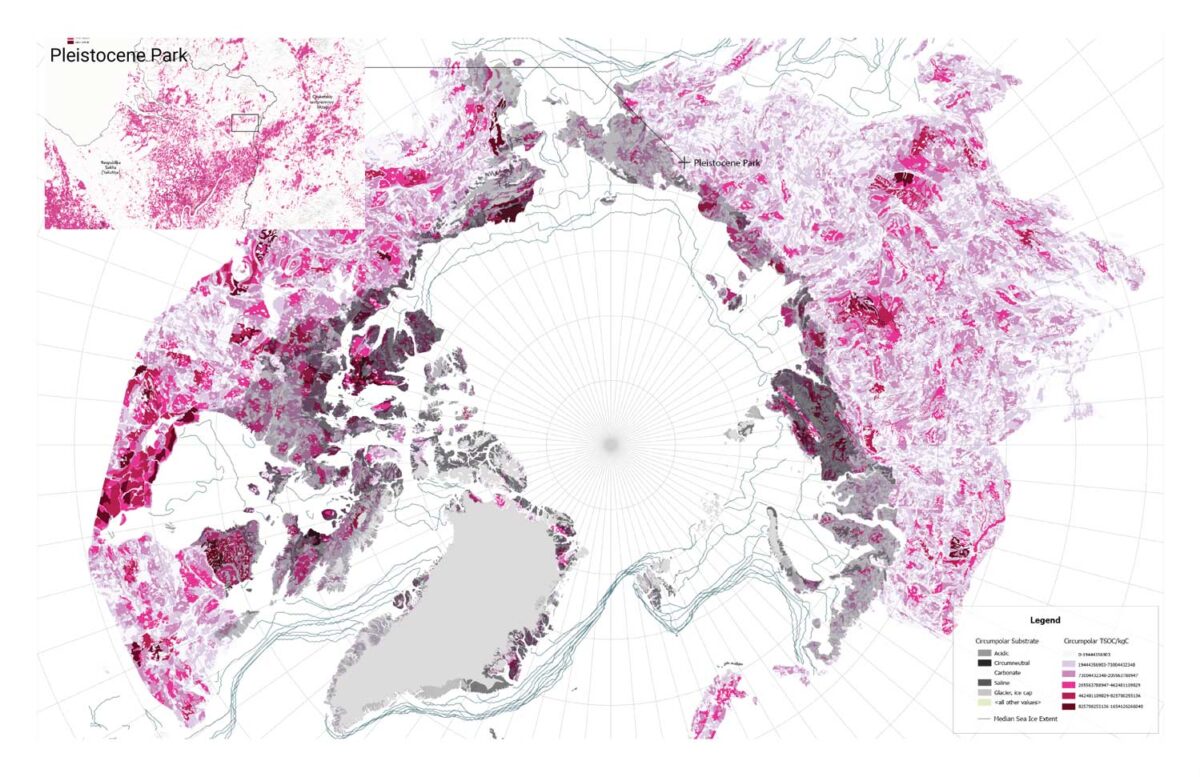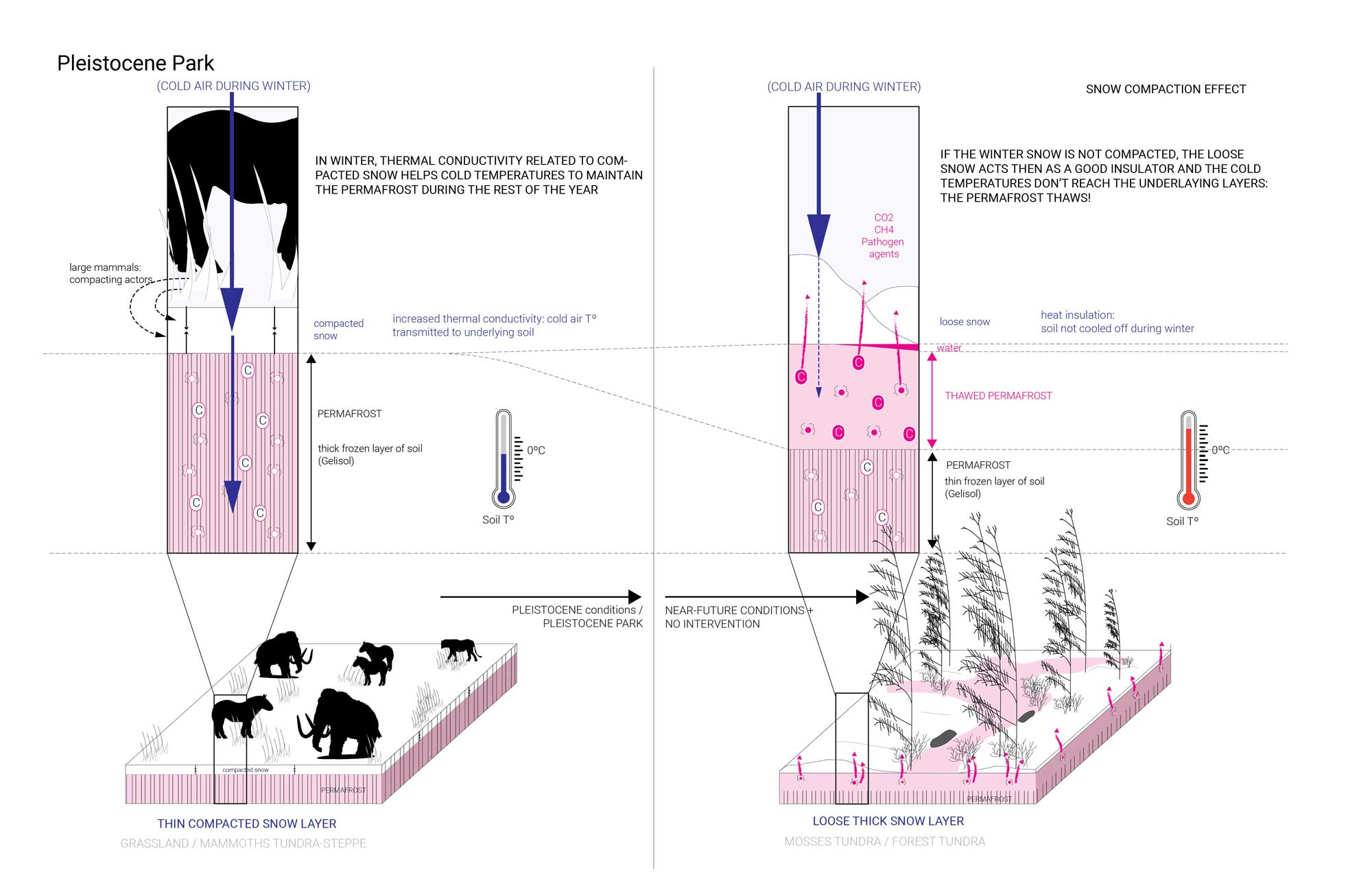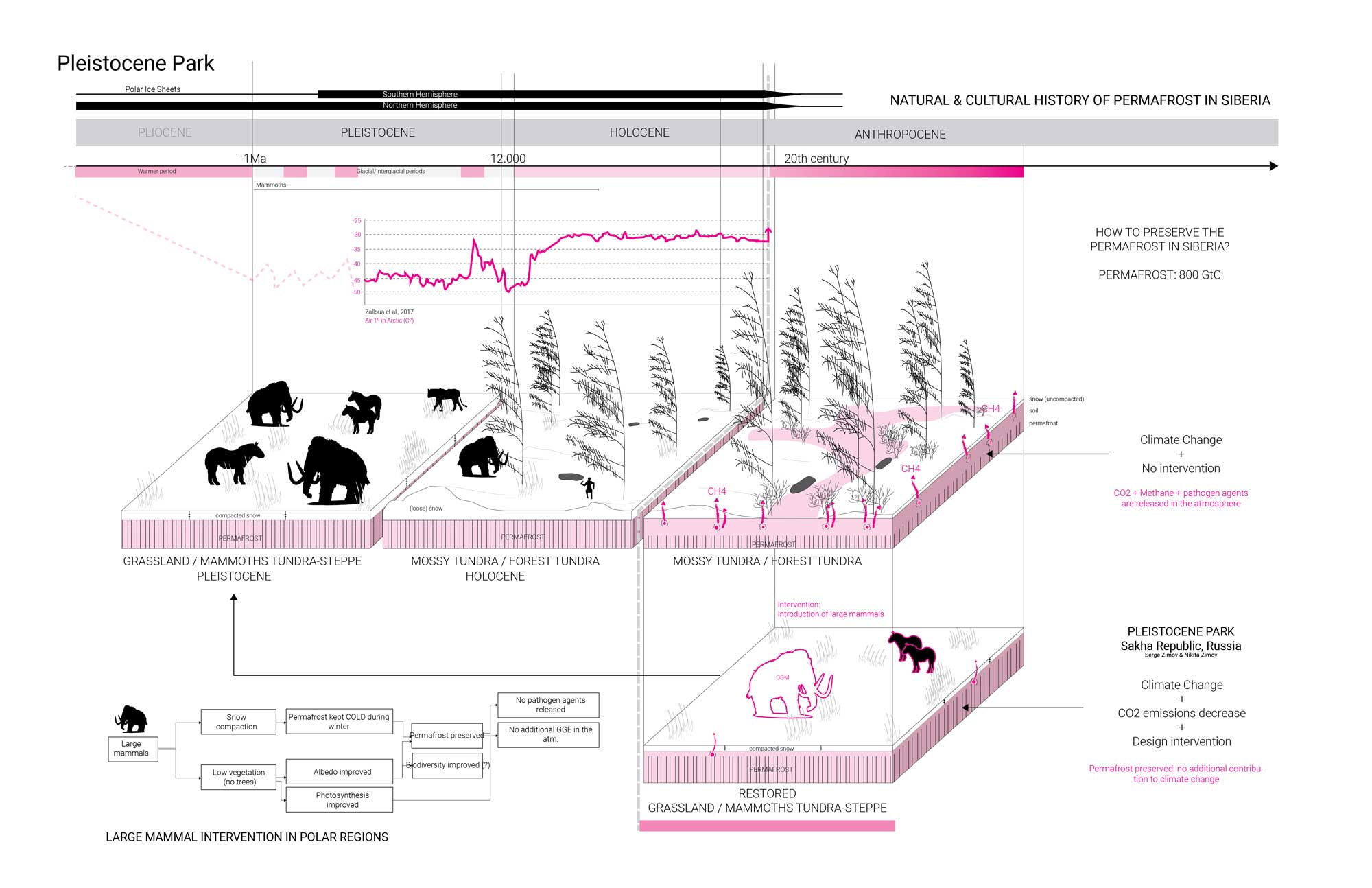Pleistocene Park

Pleistocene Park, Sakha Republic, Russia, 1996. Realized/Envisioned by: Pleistocene Park Foundation. Scale: 125 acres. 60 feet above sea level. Drawing: Yixin Du, Julia Hedges, Melanie Louterbach.
At the end of the Pleistocene, the steppe ecosystem was dominant across the planet, with a high density of animals, a thick herbaceous grass layer, and high rates of biogeochemical cycling, including carbon sequestration in grasslands. After the Pleistocene, the northern steppes were sinks of carbon under glaciers, with significant carbon stores across the steppe-tundra ecosystem. The warming of the permafrost, a permanently frozen layer of ground that circles the planet’s northern latitudes, would release the same amount of greenhouse gases as all other anthropogenic emissions combined. Pleistocene Park is dedicated to restoring the grazing ecosystems of the Arctic, led by Sergey and Nikita Zimov, father-son scientists who began Pleistocene Park through their work at the Northeast Science Station in the Sakha Republic in eastern Siberia. The grasslands absorb less heat than the forests and scrub that has grown, so the boreal forest is deforested to increase the albedo effect. Sergey Zimov works closely with Harvard geneticist George Church, who is attempting to deliver a cloned wooly mammoth to Pleistocene Park by 2028. Today, the park is roamed by several existing large herbivores, from bison, musk oxen, and wild horses that roam the 50 square mile nature reserve. The park was founded in 1996 and is proposed as a prototypical property that could be extended across the steppe ecosystem from North America to Arctic Siberia. The large herbivores would continue to maintain the grassland, ensuring it does not transition back to the forest. At the same time, they trample snow in the winter, deepening the permafrost and locking carbon dioxide in the soil.
References
Andersen, Ross. “Welcome to Pleistocene Park.” The Atlantic, April 2017.

